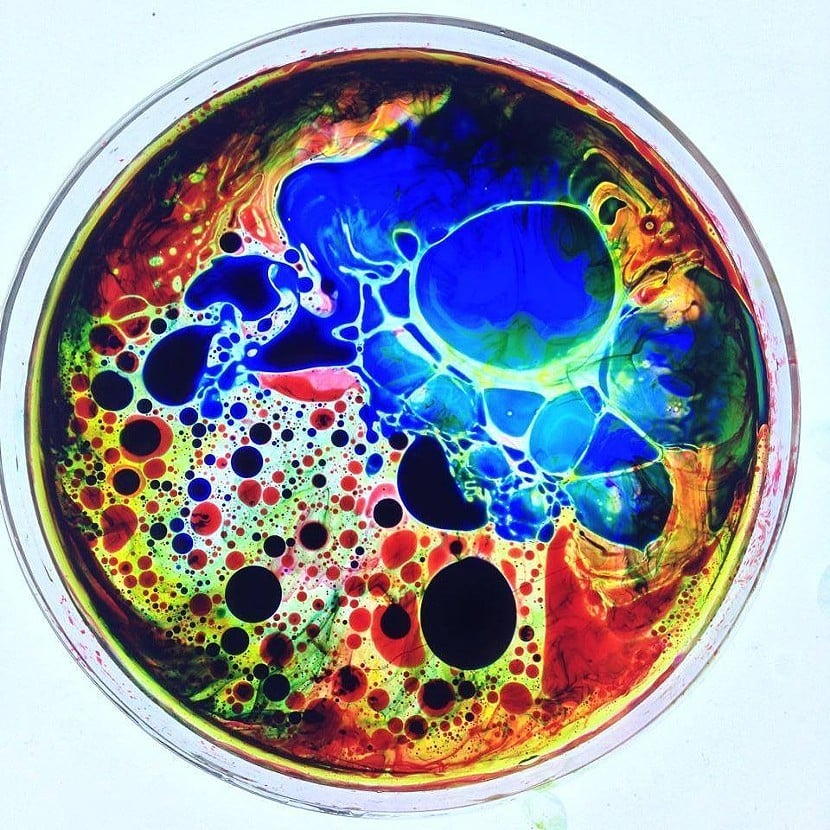In the realm of physics, the concept of light often invokes a plethora of intriguing questions. Among these, one particularly captivating inquiry emerges: is it conceivable to create liquid light? This question invites a playful exploration into the manipulation of light and its interaction with materials. The challenge lies in reconciling the fundamentally distinct nature of light as an electromagnetic wave and the characteristics of liquid, typically understood as a condensed matter state. This exploration will traverse several thematic dimensions, including the nature of light, the behavior of matter, and advances in photonics that blur the lines between these realms.
To address the inquiry, one must first delineate the properties of light. Light behaves both as a particle and a wave, as articulated by the dual nature of photons—the elementary particles of light. In a vacuum, light travels at a velocity of approximately 299,792 kilometers per second, showcasing its energetic and dynamic nature. In contrast, liquids represent a phase of matter, characterized by defined volume but variable shape, an embodiment of particle interactions governed by intermolecular forces. Thus, the juxtaposition of photons and liquid demonstrates a fundamental dichotomy between immateriality and the tangible, leading to the essential question of how these seemingly disparate entities might converge.
The prospect of “liquid light” extends into imaginal realms explored by physicists and researchers. One pathway to conceptualize this notion involves the utilization of specially designed media that can facilitate the intriguing phenomenon known as “light guiding.” Recent innovations in optical fibers and photonic crystals allow for the manipulation of light in a manner reminiscent of how liquids flow. In this context, researchers have engineered metamaterials that exhibit index-of-refraction properties capable of controlling the propagation of light, creating a scenario where one might say light behaves in a fluid-like manner.
Additionally, advancements in quantum optics introduce complexities that further elaborate this discussion. A pivotal concept arises in the form of Bose-Einstein condensates (BECs). In these ultra-cold states of matter, bosons—an integer-spin particle category—coalesce into a single quantum state at temperatures close to absolute zero. Under these circumstances, photons interact with the atomic cloud of the condensate. Strikingly, researchers have created a synthesized light-liquid amalgam wherein photons become “dressed” with the properties of the condensate, thus resembling a liquid-like form of light. Herein lies the potential realization of liquid light, albeit within highly controlled experimental conditions.
Another avenue for consideration comes from the field of nonlinear optics. Nonlinear media exhibit properties where the refractive index is dependent on the intensity of light, enabling phenomena such as self-focusing and spatial solitons. In particular, the formation of solitons—localized wave packets that travel at constant velocity without changing shape—suggests the capability of creating quasi-liquid-like behavior in certain media. The dynamic interactions between light and the medium enforce a delicate balance that could metaphorically be construed as liquid light, particularly when discussing optical vortices behaving akin to rotating fluids.
Nonetheless, although these scientific endeavors hint at a conceivable framework for “liquid light,” numerous challenges impede its realization. The foremost hurdle remains the intrinsic nature of light itself. Light, as a massless particle, inherently defies some classical traits of liquid states. The properties of fluid dynamics entail the existence of viscosity and cohesion, fundamentally absent in light unless coupled exceptionally closely with matter. Thus, creating a tangible liquid state from light leads to considerations of the requisite thermal and kinetic energies to sustain such a hybrid form, a rather complex balancing act in practical terms.
Moreover, the interactions between light and matter must be accounted for. Typically, for a medium to exhibit fluid-like properties in its interaction with light, it must permit sufficient engagement at the quantum level. Current advancements in nanophotonics and quantum mechanics provide frameworks for achieving these engagements, yet they equally surface challenges regarding stability, coherence, and the preservation of quantum states in light-enhanced fluids.
While profound excitement exists within the scientific community regarding liquid light, a degree of skepticism also prevails. The complexity of manipulating light with the precision required to create a stable, usable form pushes the boundaries of current technological capabilities. Future research is imperative to unravel the multifaceted nature of light and establish methods for engendering conditions under which liquid-like properties could manifest coherently.
In conclusion, the possibility of creating liquid light is a rich, multifaceted inquiry that opens the door to innovative interdisciplinary exploration. While current advancements and conceptual frameworks provide a tantalizing glimpse into the conceivable, the road to realization remains fraught with complexities. Ultimately, understanding light’s interaction with matter could yield not only theoretical revelations but also transformative applications in fields ranging from telecommunications to photonics. The journey to liquid light thus continues to captivate, posing challenges that beckon researchers to delve deeper into the enigmas of light and its myriad potential manifestations.












